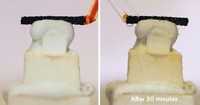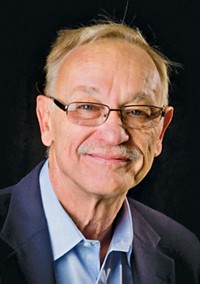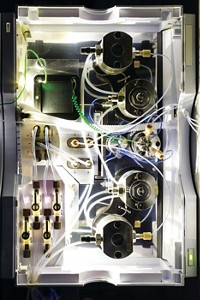Advertisement
Grab your lab coat. Let's get started
Welcome!
Welcome!
Create an account below to get 6 C&EN articles per month, receive newsletters and more - all free.
It seems this is your first time logging in online. Please enter the following information to continue.
As an ACS member you automatically get access to this site. All we need is few more details to create your reading experience.
Not you? Sign in with a different account.
Not you? Sign in with a different account.
ERROR 1
ERROR 1
ERROR 2
ERROR 2
ERROR 2
ERROR 2
ERROR 2
Password and Confirm password must match.
If you have an ACS member number, please enter it here so we can link this account to your membership. (optional)
ERROR 2
ACS values your privacy. By submitting your information, you are gaining access to C&EN and subscribing to our weekly newsletter. We use the information you provide to make your reading experience better, and we will never sell your data to third party members.
Analytical Chemistry
The P in HPLC
December 17, 2007
| A version of this story appeared in
Volume 85, Issue 51
Executive Compensation Information Available
Information from the American Chemical Society's 2006 Form 990 is now available to ACS members on www.acs.org. To access the information, please have your ACS membership number handy and follow these instructions: Go to www.acs.org. In the upper right-hand corner, log in. If you are already a registered user, enter your user name and password. If you're a new user, follow the link and register (a process that requires your ACS membership number and takes less than a minute). Once you have logged in, you will see a link titled "Member Information." Click on this link, go to the heading "Your Organization" at the bottom of the screen, and click on the link titled "Access the Compensation of ACS Officers and Key Employees." You will immediately go to the introductory text; the Form 990 is available by clicking on the link at the bottom of the page titled "2006 Compensation Schedules." If you have any problems, contact webmaster@acs.org.
I found it fascinating to read about the progress in separation technology that is emerging from the developments in supercritical fluid chromatography (C&EN, Oct. 22, page 49). However, I am extremely disappointed to read in C&EN that the current popular technology that it might eventually supersede is referred to as "high-pressure liquid chromatography." I am even more disturbed that this appeared in an article that includes quotations from an interview with James L. Waters, former founder and chairman of Waters Corp., a company that pioneered developments in liquid chromatography.
Prior to the appearance of HPLC, chromatography was carried out by passing a stream of solvent through a glass column with tube connectors, neither of which could resist pressures of greater than 3–4 atm. Solvent was forced through by placing the solvent container above the column or by use of a pump with a single moving piston that resulted in an unsteady flow of solvent because of the drop in pressure at the end of each cycle. The stationary phase was composed of beads of derivatized cross-linked polystyrene that underwent compression under pressure.
The great leap forward that occurred about 40 years ago emerged from three major developments: First, new stationary phases composed of modified micro-sized particles that did not shrink under pressure. Second, columns made of stainless steel that withstood higher pressures and had uniformly smooth inner surfaces that did not interfere with the flow of solvent. And third, pumps that had two pistons with alternating movement that provided an uninterrupted flow of solvent. This combination of technology provided a much superior separation of analytes than had been achieved previously. The breakthrough technology was christened "high-performance liquid chromatography" for obvious reasons.
Because the particles of the stationary phase are so small, there is massive resistance to the flow of solvent through the column. Hence, high pressures indeed are employed in order to achieve the separation of the analytes within a convenient time. However, the high pressure is incidental to the technology. This was impressed upon me in no uncertain terms by Aaron Wolkoff, the eloquent instructor from Waters Corp. who is currently president of Waters Canada, during a course on HPLC that I attended in the early 1970s.
The confusion in terminology unfortunately arises partly because the words performance and pressure begin with the same letter.
N. Leo Benoiton
Ottawa, Ontario





Join the conversation
Contact the reporter
Submit a Letter to the Editor for publication
Engage with us on Twitter